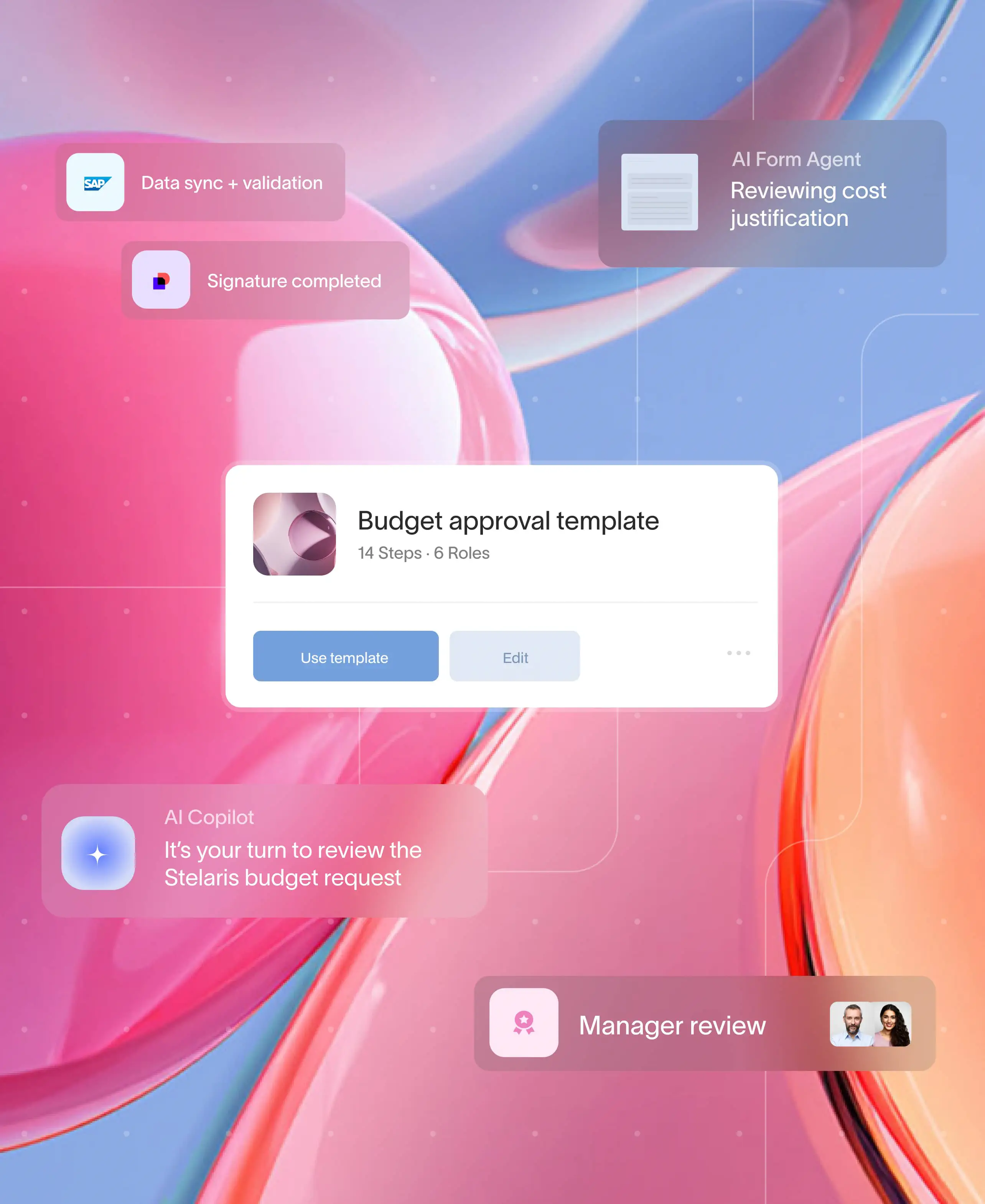
In the modern business world, remote work has become a permanent shift; rather than just a temporary trend. With the growing technologies and global nature of business, remote working is now common for many businesses. However, it brings its own set of challenges and opportunities.
As remote work continues to grow in popularity and necessity, businesses must rely on the best workflow management software. It ensures meeting the unique needs of a distributed workforce.
Additionally, workflow management software streamlines business operations, ensures collaboration and maintains productivity for remote working between the business and its clients. Let us explore the benefits of workflow management software as it adapts to remote work trends.
The shift to remote work and its impact on workflow management
The popularity of remote work across various businesses and their clients is undeniable. Global disruptions like the pandemic, significantly accelerated the adoption of business-client collaboration. However, the convenience and flexibility of remote work management software make remote business-client collaboration an attractive business model.
As businesses now embrace remote work trends, it impacts interaction and client project management. As employees and clients are dispersed across locations, traditional project management tools often face challenges. It becomes difficult to monitor task completion, ensure collaboration, and maintain workflow consistency.
Thus, these challenges create the need for solutions to manage workflow remotely, to accommodate the new working ways.
Challenges of remote work in workflow management
The transition to remote work brings several challenges that the best workflow automation platform must address.
1. Communication and collaboration
With remotely working employees and clients, maintaining consistent communication becomes more difficult. Collaboration and communication must be streamlined so everyone, from the clients to the internal employees, can stay informed with the updated details.
2. Tracking and visibility
Managing business operations remotely requires more transparency than ever. Without consistent tracking and visibility, remote work can turn chaotic, leading to missed deadlines and disorganization.
3. Accountability
Remote working increases the risk of disconnection from the client’s business goals or deadlines. Businesses, thus, rely on the best workflow management software, ensuring accountability without micromanaging.
4. Data security and compliance
With remote work, sensitive data is often at security risk. To follow the necessary compliance standards while maintaining robust data security is an ongoing challenge for businesses.
5. Integrating multiple tools
Remote work relies on using multiple tools for various processes. Integrating these tools within the existing system for a seamless experience often becomes a challenge for businesses.
Why workflow management software must adapt?
Given these challenges, the need to shift from the traditional workflow management system is quite evident. Thus, businesses must choose the best workflow automation software that adapts to the current remote work trends. Here are some of the key reasons:
1. Facilitating real-time collaboration
Remote working needs real-time collaboration. Workflow management software enables businesses to work seamlessly, irrespective of the location. Moreover, with features like task assignments, project status tracking, and shared workspaces, businesses can collaborate with clients effectively in real-time.
A flexible workflow management software easily accommodates instant updates to promote better client-business collaboration. It also empowers businesses to make dynamic adjustments without bottlenecks or delays.
2. Providing full visibility and transparency
Remote individuals may often feel disconnected from the progress of the projects. Thus, workflow management software provides full visibility into task status, timelines, and workloads.
The software provides updated real-time information to everyone, preventing misunderstanding and ensuring proper alignment. With complete transparency and visibility, remote teams can effectively manage team and client performance without feeling disconnected.
3. Improved accountability and reduced micromanagement:
Remote work blurs the boundaries in professional lives, leading to productivity challenges. This is where the best workflow automation software helps to maintain accountability. It clearly defines roles, responsibilities, and deadlines with clear expectations, reducing the need for micromanagement.
Additionally, automated reminders and notifications update the members to stay on track; thus, building trust. With the perfect balance between autonomy and accountability, workflow management software fosters a healthy work environment.
4. Enabling scalable processes
With a growing number of remote team members, the need for scalable workflows becomes more important. Traditional systems may struggle to support the expanding team, especially in dynamic environments.
A well-structured workflow management system ensures seamless scalability to accommodate increasing team members and volume of tasks. This enables businesses to plan their scalability without adding unnecessary complexities.
5. Ensuring security and compliance
With remote work, businesses and clients face a higher risk of data breaches and non-compliance. The best workflow automation platform prioritizes data security to protect sensitive business information. It ensures that remote members can easily access and manage data with high-security authentication.
Additionally, these platforms offer various compliance features like audit trails, automated reporting, and customizable permission. Using these specialized features, businesses ensure that remote members comply with industry regulations and policies.
6. Supporting integration with other tools
Remote working requires a variety of tools to deliver a seamless experience and outcome. However, managing and integrating these varying tools can be challenging. Workflow management software seamlessly integrates these tools to create a cohesive working environment.
With integration, businesses can securely share information across platforms, reducing duplication and errors. It enables authorized members to access the required information using their preferred communication mode.
How does Moxo adapt to remote work between clients and businesses
Workflow management with Moxo seamlessly supports remote work, adapting to evolving business needs. As businesses shift towards hybrid or remote work models, Moxo offers a comprehensive platform to enhance collaboration and ensure accountability. It helps in maintaining efficiency across dispersed teams.
Moxo enables businesses to access and manage workflows from anywhere and at any time. This ensures a productive workflow, regardless of the location. It helps businesses to collaborate and track progress in real-time without the constraints of traditional setup.
Moxo also centralizes communication and data sharing with its seamless integration with the existing tools. As it provides full visibility into the project status, performance, progress, and deadlines, businesses can make better decisions. It makes it easier for businesses to maintain accountability with remote members and individuals.
Data security is always a priority with Moxo. With its role-based access control and authentication, it protects sensitive information and details.
With Moxo, modern businesses can scale operations, streamline remote collaboration between businesses and clients, and adapt to the demands of the modern workforce.
Businesses can maintain efficiency in the remote work era, driving scalability and long-term success.
Key features of Moxo for remote work
Moxo extends specific features that align with remote work trends. Here are some of the most important:
- Collaboration
- Task automation
- Customization
- Mobile compatibility
- Time tracking
- Advanced analytics
Schedule your demo call today and get started with Moxo to level up your client collaboration.
Conclusion
As remote work trends are continuously growing, workflow management software must evolve to meet the needs of a distributed workforce. Businesses must choose reliable remote work management software to foster collaboration with their clients, ensure full visibility, and maintain accountability.
With the right workflow management software, businesses empower remote members to deliver the best experience, irrespective of their location. A well-integrated solution reduces operational friction and supports long-term success in the remote work era. Get started and integrate Moxo into your client collaboration.
FAQs
Why is it important for workflow management software to adapt to remote work trends?
Workflow management software must adapt to streamline collaboration and maintain productivity. Adapting to remote work trends ensures that workflow remains efficient and accountable. Overall, adaptation is the key to sustaining business operations in remote work environments.
How does workflow management software support remote members?
The software enables remote members and clients to access workflows and collaborate from anywhere. With seamless collaboration, it centralizes communication and provides visibility for success. It keeps everyone aligned and efficient, no matter the location.
Can Moxo ensure data security for remote teams?
Yes, Moxo prioritizes data security with its role-based access control and authentication. This protects sensitive information, even in remote working environments. Moxo ensures its security protocols comply with industry standards, ensuring uninterrupted business operations.
How does workflow management software manage productivity?
The software offers features like time tracking, automated task assignment, and reporting tools. This enables businesses to monitor productivity with timely delivery. With real-time visibility, businesses can easily allocate resources and identify potential bottlenecks, driving performance and accountability.





